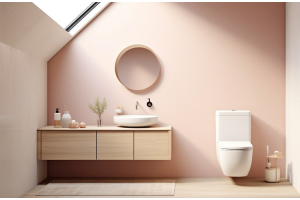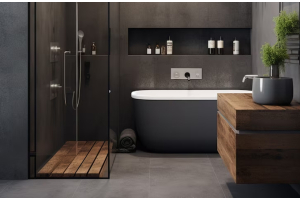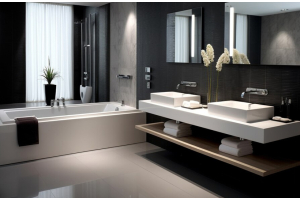Install Your Kitchen Tap Like a Pro: Tips and Tricks for a Successful Project
Do you want to install a new kitchen tap yourself but don’t know where to start? Don’t worry! Installing a kitchen tap is one of the most common DIY projects for homeowners. With the right tips and tricks, you can install your own kitchen tap like a pro. In this blog post, we’ll provide you with the essential information you need to successfully install your kitchen tap, from preparation to completion.
Gather your tools and materials
When beginning a DIY kitchen tap installation project, the first step is to make sure you have all the necessary tools and materials. You’ll need a set of adjustable wrenches, a pair of pliers, a basin wrench, a utility knife, thread sealant tape, a screwdriver, and the new tap. You’ll also need access to the shutoff valves for your water supply and access to the sink cabinet for installation. Make sure you read through the instructions that come with your new tap before you begin so you know exactly what you need. Once you’ve gathered everything you need, you’re ready to start!
Shut off the water
When you're ready to install your new kitchen tap, the first step is to shut off the water. This is a crucial part of the project and should not be skipped or overlooked. Depending on the type of tap you're installing, there may be a dedicated shut off valve nearby, or you may need to turn off the main water supply to the house. Whichever option you choose, make sure to do it before you begin your installation process.
If you have a dedicated valve for the tap, it will usually be located beneath the sink near the existing tap. It's important to check that it's completely turned off before continuing. If it isn't, then the valve needs to be turned off until it won't turn any further.
If you don't have a dedicated valve, then you'll need to turn off the main water supply to your house. This is typically located in the basement or utility closet of your home. It's best to double-check that all of the other taps and appliances in your house are also off before proceeding.
Once the water is shut off and you're confident that it won't accidentally be turned back on while you're working, then you can proceed with the installation process.
Remove the old tap
Removing your old tap is the first step in a successful kitchen tap installation. Before you start, make sure you have gathered the necessary tools and supplies. You will need pliers, adjustable wrench, and a container to catch any water that comes out when you loosen the connection.
First, turn off the water at the shut-off valves for the hot and cold water lines underneath your sink. After the water has been shut off, use the adjustable wrench to loosen the coupling nuts on either side of the faucet. Once the nuts are loose, use the pliers to disconnect the supply lines from the faucet. Place the container beneath the supply lines to catch any excess water that may still be inside them.
Once the supply lines are disconnected, it’s time to remove the old faucet. Carefully wiggle and twist the old faucet until it comes loose from its mounting plate. If there is any putty or caulk between the faucet and the sink, you will need to scrape it off with a putty knife. Once the old faucet is removed, check for any rust or mineral deposits on the sink surface before installing the new tap.
Now that you have successfully removed the old tap, you are ready to move on to installing your new one.
Install the new tap
Installing a new kitchen tap can seem intimidating at first, but with the right tools and some patience, it's actually a fairly straightforward process. Before you begin, make sure you have all of the materials and tools needed for the job.
1. Begin by attaching the base of the tap to the sink. Make sure it is secure and level with the countertop.
2. Next, attach the hoses that will connect the tap to the water supply lines in the wall. Tighten them with pliers or an adjustable wrench until they are securely in place.
3. Now, attach the faucet handle to the stem of the tap using a washer and a nut. Tighten the nut with a wrench or pliers until it is snug, but not so tight that you can't adjust it.
4. Finally, attach the aerator to the end of the spout. You may need to use pliers or an adjustable wrench to secure it firmly in place.
Once all of these steps are completed, your kitchen tap should be installed correctly and ready to use! Just remember to test it out before you put everything away and make sure there are no leaks or other problems.
Turn on the water
Once the new tap has been installed, it's time to turn the water back on. Begin by closing the shut off valves, ensuring they are completely turned off. Next, open both the hot and cold water supply lines and allow the pipes to fill with water. It's important to note that it can take a few minutes for the pressure to build up. After the pipes have filled, check for any leaks or drips around the base of the tap. If any are found, use plumber’s tape to tighten the connections. Once the water is flowing and no leaks are present, you’re ready to test out your new tap!
Test your new tap
Once your kitchen tap is successfully installed, it's time to make sure everything works properly. Start by turning on the water and making sure you get an adequate flow. Check for any leaks or drips around the base of the faucet, and tighten any loose connections if necessary. Next, turn on the hot and cold taps to make sure that both are flowing correctly and at the desired temperature. If the pressure seems off or if you notice any strange noises, you may need to adjust the aerator or check the connection between the shutoff valves and the tap. Finally, inspect the entire installation to make sure everything is secure and functioning properly.
Your new tap should now be ready to use and enjoy! Congratulations on a job well done!




